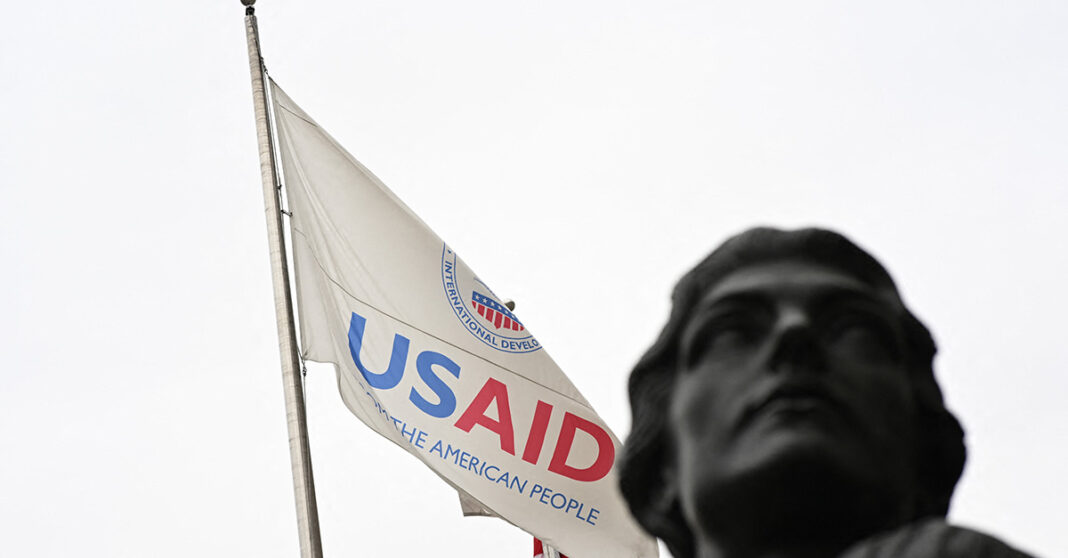Operations of the United States Agency for International Development (USAID) in Laos are facing uncertainty after the Trump administration’s recent decision to temporarily pause all foreign assistance programs.
On 4 February, less than 24 hours after shutting down its headquarters in Washington, D.C., USAID announced that all staff, both in the US and abroad, would be placed on administrative leave starting 7 February.
The administrative leave will hit “all USAID direct hire personnel… with the exception of designated personnel responsible for mission-critical functions, core leadership and specially designated programs.”
“Thank you for your service,” the statement read.
Reports suggest that the new Trump administration plans to keep fewer than 300 of the agency’s 10,000 workers, reducing it to a smaller version of the agency itself. Employees stationed overseas have 30 days to return to the US.
The USAID website had gone offline on 1 February, returning on 4 February with the layoff announcement.
The aid arm of US foreign policy, USAID funds health and emergency programs in around 120 countries, including the world’s poorest regions.
This recent decision, however, has significantly impacted low-income countries where the agency has invested substantial funds.
In 2024, the humanitarian agency allocated a total of USD 860 million to Southeast Asia, working in Cambodia, Laos, Myanmar, the Philippines, Thailand, and Vietnam.
Impact on Laos
In Laos, where the organization resumed operations in 2011 after a 35-year absence, it has now temporarily paused its activities.
Staff have been instructed not to disclose any information about the organization’s current status in the country.
“We (all USAID employees) are not allowed to share any information,” said an employee under a USAID-funded project in Laos who requested to remain anonymous. “The only thing I can share is that all USAID projects in Laos are paused. We are waiting for the answer from the USAID Laos if we have to stop or continue our projects.”
From a personal perspective, the employee said, “I’m sad because I might lose my job, but I understand them. USAID is money from American people taxes, so why do they have to help the world? And they also have a lot of problems in their country.”
Since returning to Laos, USAID has focused on health programs to prevent diseases like HIV/AIDS, malaria, and avian flu, and supported environmental protection and sustainable forestry.
In 2014, USAID Laos funded USD 8 million in programs to improve health, protect the environment, and help the economy grow sustainably.
One of such programs was the Lao Handicraft Association’s Sustainable Improvements of Home Textile Sector project, which has also come to an abrupt halt following the agency’s sudden shutdown.
“Our project was about 60 percent complete before we had to stop everything due to USAID’s closure,” said Thavideth Sivilay, also known as Stephan, a consultant for the association who helped secure the funding.
The USD 70,000 initiative aimed to enhance Lao handicraft producers’ ability to meet AZO-free dyes standards—ensuring that silk and fabric dyeing processes are free from harmful chemicals. Compliance with these standards would have allowed Lao silk and cotton to be exported to European and US markets, where regulations prohibit the use of certain toxic dyes.
“We were scheduled to conduct another training for local silk weavers in February, but everything was suddenly put on hold,” Stephan explained.
“This has been a huge setback. Not only did we have to stop the project immediately, but the silk weavers also lost motivation after all the work we had put in.”
He added that the USAID team had recently confirmed plans with him before the shutdown took effect.
According to Stephane, the project initially planned to run from June 2024 to May this year before the shutdown.
Recent changes in US foreign policy have raised concerns about the future of such initiatives.
“Consistent with President Trump’s Executive Order on Reevaluating and Realigning United States Foreign Aid, Secretary Rubio has paused all US foreign assistance funded by or through the State Department and USAID for review. He is initiating a review of all foreign assistance programs to ensure they are efficient and consistent with US foreign policy under the America First agenda,” read a statement from a US Embassy’s spokesperson in Vientiane sent to the Laotian Times via email.
Global Impact
As of 2023, the most recent year for which full data was available, the top three recipients of aid from USAID were Ukraine, Ethiopia and Jordan, according to the Congressional Research Service.
Other top recipients of aid included the Democratic Republic of Congo, Afghanistan, South Sudan, and Syria.
The scale of USAID’s funding for Ukraine is significant, with the war-torn European country receiving more than USD 16 billion in macroeconomic support, according to US government data.
Founded in 1961, the agency’s budget of more than USD 40 billion is a small drop in the US government’s overall annual spending of nearly USD 7 trillion.
The United States is the world’s largest provider of official development assistance, according to the Organization for Economic Cooperation and Development (OECD).
Parts of this article were sourced from AFP



